Teaching Documents by Janusz Kaczmarek
In this paper I explore a methodological problem: how can we use topology and topological concept... more In this paper I explore a methodological problem: how can we use topology and topological concepts as a basis for making sense of ontological concepts and problems? I try to show that it is possible to describe some fundamental concepts of Leibniz's Monadology using topology. Therefore, I shall treat monads as topologies, and substance as a set of topologies, with a certain topology distinguished as being the so-called dominant monad. This, as we shall see, furnishes some interesting theorems, comparable with those of systems theory and Leibniz's own theory of substance.
The paper describes some topological tools: the first part definesWittgenstein's topology and a l... more The paper describes some topological tools: the first part definesWittgenstein's topology and a lattice of situations (as a theorem). Next, there is considered a non-atomistic lattice of situations, sometimes called a hybrid lattice. It allows us to explore the differences between the atomistic and non-atomistic approaches. Cf. https://books.google.pl/books? hl=pl&lr=&id=60DEDwAAQBAJ&oi=fnd&pg=PA397&ots=9BApTtZRZ7&sig=KT27qD-_IBThJisPpqhZCtOcJ10&redir_esc=y#v=onepage&q&f=false
W monografii zaprezentowałem analizę trzech podstawowych płaszczyzn ważnych dla badań ontolo... more W monografii zaprezentowałem analizę trzech podstawowych płaszczyzn ważnych dla badań ontologicznych: płaszczyznę indywiduów, płaszczyznę przedmiotów idealnych oraz płaszczyzną pojęć. Podałem również "formalny obraz" idei (por. różnie zdefiniowane drzewa gatunków i rodzajów) oraz analizę logiczną przedmiotów indywidualnych i idei poprzez skonstruowanie ontologicznych wersji logik modalnych i temporalnych.
Głównym celem tej pracy jest analiza tzw. cech negatywnych oraz podanie konstrukcji przedm... more Głównym celem tej pracy jest analiza tzw. cech negatywnych oraz podanie konstrukcji przedmiotu, którego „składnikami” są cechy pozytywne i negatywne. Skonstruujemy przy tym pewną strukturę przedmiotów zupełnych i niezupełnych w sensie Meinonga i Łukasiewicza oraz podamy prosty język (język zdaniowy) pozwalającego na konstruowanie wypowiedzi o tych przedmiotach.
Papers by Janusz Kaczmarek
Acta Universitatis Lodziensis, 1993
Przegląd Filozoficzny, Sep 23, 2021

Przegląd Filozoficzny, Dec 20, 2023
Atomizm logiczny to koncepcja ontologiczna zaproponowana przez Bertranda Russella i Ludwiga Wittg... more Atomizm logiczny to koncepcja ontologiczna zaproponowana przez Bertranda Russella i Ludwiga Wittgensteina, w której podstawową funkcję, pozwalającą zrozumieć "umeblowanie" świata, pełnią "atomy". To ogólne sformułowanie niczego nam jeszcze nie mówi, tym bardziej że w dziejach filozofii spotykamy się z różnymi postaciami atomizmu. Gdy przypominamy sobie tezę 1.1 z Traktatu logiczno-filozoficznego Wittgensteina ("Świat jest ogółem faktów, nie rzeczy"), pojawia się naturalny podział atomizmu na: a) atomizm przedmiotowy (rzeczowy, substancjalny) oraz b) atomizm faktów (stanów rzeczy). Atomizm pierwszego typu stawia tezę, że u podstaw naszego świata leżą niepodzielne atomy-przedmioty, natomiast atomizm typu drugiego proponuje tezę, że podstawę naszego świata stanowią istniejące elementarne układy rzeczy, tj. elementarne fakty-lub inaczej: realne odpowiedniki prostych zdań, mające formę logiczną postaci p, q bądź P(a) czy R(a, b, c), o ile zdania te są prawdziwe. Przyjrzyjmy się bliżej obu formom atomizmu.
Acta Universitatis Lodziensis, 1990
Logic and Logical Philosophy, 2012
The paper formalises the structure of Porphyrian tree (PTS) and introduces operation of determina... more The paper formalises the structure of Porphyrian tree (PTS) and introduces operation of determination (D), which renders the Wolff's idea of generating attributes of being by means of essentialia. The analysis of their mutual dependencies has lead to the following conclusion: operation D is generated by PTS and, conversely, some Porphyrian structure is determined by operation D.
Metaphilosophy
This article examines the use of mathematical concepts in philosophy, focusing on topology, which... more This article examines the use of mathematical concepts in philosophy, focusing on topology, which may be viewed as a modern supplement to geometry. We show that Plato and Parmenides were already employing geometric ideas in their research, and discuss three examples of the application of topology to philosophical problems: the first concerns the analysis of the Cartesian distinction between res extensa and res cogitans, the second the ontology of possible worlds of Wittgenstein's Tractatus, and the third Leibniz's monadology. We also consider the role of topology in mathematical explanations of the sort found in science, arguing that it can perform a role in philosophy that is of comparable importance.
De Gruyter eBooks, Nov 18, 2019
In this paper I explore a methodological problem: how can we use topology and topological concept... more In this paper I explore a methodological problem: how can we use topology and topological concepts as a basis for making sense of ontological concepts and problems? I try to show that it is possible to describe some fundamental concepts of Leibniz's Monadology using topology. Therefore, I shall treat monads as topologies, and substance as a set of topologies, with a certain topology distinguished as being the so-called dominant monad. This, as we shall see, furnishes some interesting theorems, comparable with those of systems theory and Leibniz's own theory of substance.
Electronic Proceedings in Theoretical Computer Science
W artykule poruszam wskazany w tytule problem identyczności przedmiotów (trwających w czasie i pr... more W artykule poruszam wskazany w tytule problem identyczności przedmiotów (trwających w czasie i przestrzeni) i ich identyfikacji (również w czasie i przestrzeni, gdy przedmioty te trwają i zmieniają położenie). Przedstawiam zarys propozycji Strawsona, ale też podejście czysto formalne obecne w naukach formalnych (logika i matematyka). W końcowej części podaję własne rozwiązanie ontologiczne zagadnień badanych przez Strawsona. Opiera się ono na formalnych rozważaniach w ramach tzw. logik zorientowanych ontologicznie (będących ontologiczną wersją logik modalnych i temporalnych), zawartych w mojej książce <i>Indywidua. Idee. Pojęcia</i> (2008).
E. J. Lowe and Ontology, 2022
Philosophy of Logic and Mathematics, 2019
The paper describes some topological tools: the first part definesWittgenstein&#39;s topology... more The paper describes some topological tools: the first part definesWittgenstein&#39;s topology and a lattice of situations (as a theorem). Next, there is considered a non-atomistic lattice of situations, sometimes called a hybrid lattice. It allows us to explore the differences between the atomistic and non-atomistic approaches. Cf. https://books.google.pl/books? hl=pl&amp;lr=&amp;id=60DEDwAAQBAJ&amp;oi=fnd&amp;pg=PA397&amp;ots=9BApTtZRZ7&amp;sig=KT27qD-_IBThJisPpqhZCtOcJ10&amp;redir_esc=y#v=onepage&amp;q&amp;f=false
Contemporary Polish Ontology, 2019
In this paper I explore a methodological problem: how can we use topology and topological concept... more In this paper I explore a methodological problem: how can we use topology and topological concepts as a basis for making sense of ontological concepts and problems? I try to show that it is possible to describe some fundamental concepts of Leibniz&#39;s Monadology using topology. Therefore, I shall treat monads as topologies, and substance as a set of topologies, with a certain topology distinguished as being the so-called dominant monad. This, as we shall see, furnishes some interesting theorems, comparable with those of systems theory and Leibniz&#39;s own theory of substance.
Published in: Przegląd Filozoficzny - Nowa Seria, 2016, Nr 4(100), pp. 131 - 145 In my paper I in... more Published in: Przegląd Filozoficzny - Nowa Seria, 2016, Nr 4(100), pp. 131 - 145 In my paper I investigate fundamental object (concept) of ontology i.e. ontological atom, an element that is used by ontologists to construct ontological reality. I focus on Leibniz theory of monad and substance and next I propose to use topological concepts of topological spaces, topological subspaces, weaker topology and other to interpret a concept of substance in Leibniz’s sense as a set of topological spaces. It appears that in this case a substance is a system. So we can compare theses of systems theory with theses of our concept of substance that is understood as a system of topologies with central dominant topology.

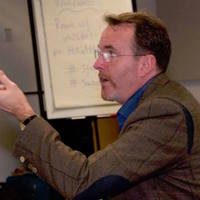
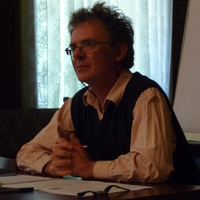
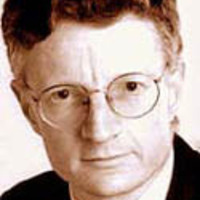
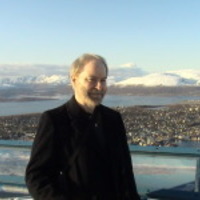
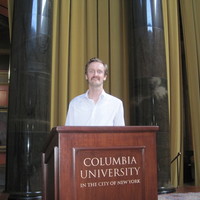

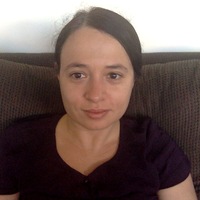



Uploads
Teaching Documents by Janusz Kaczmarek
Papers by Janusz Kaczmarek